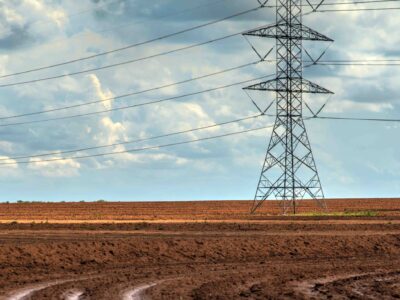(Bloomberg) —
As I write this newsletter, heat records are being broken all over the globe.
On Tuesday, the UK Met Office recorded the country’s first-ever temperature above 40 degrees Celsius (104 degrees Fahrenheit) at London’s Heathrow Airport just before 1 p.m., as temperatures were still rising. High demand sent power prices in the UK up 5% in one day.
Across the Channel, things have been even more volatile. Europe’s heat wave has reduced France’s available nuclear power, as the river water used to cool nuclear plants became too hot to be effective. As a result, day-ahead baseload power prices settled at 610 euros per megawatt-hour — about 10 times higher than prices from 2017 to 2021.
Meanwhile, in Texas, the operator of the state’s main electricity grid reported record power demand on Tuesday, thanks to temperatures well into the 100s. That’s the tenth record event of 2022.
Texas power plants are working flat out. Maintenance is being deferred to ensure sufficient capacity, but that only stresses the system further. Renewables are some help — in particular solar, which generates almost 40 times more power in 2022 than it did in 2016 — but wind output is typically low during extreme heat events. The grid is under strain and will remain that way this summer.
That’s true of California as well (Death Valley hit 122°F in June). But its main grid can increasingly draw on a crucial power source that was negligible just a few years ago.
California has a very different power mix than France or Texas. For one thing, it imports a significant amount of power from the Pacific Northwest and other neighboring states. For another, its grid already draws on renewables so much that its power demand curve has a completely different shape from Texas’s. Wind and particularly solar generate enough energy during daytime hours that in the summer, generation from other types of power plants reaches its low point in the late morning and doesn’t peak until almost 8 p.m. This pattern is known as California’s “duck curve” because, well, it looks kind of like a duck.
There is something important to note about this chart. While California’s total electricity demand rises fairly smoothly from midday through evening, net demand — that is, minus wind and solar — rises much more quickly as solar generation drops off. On July 15, for instance, total demand at 7:30 p.m. was the same as at 4:30 p.m. Over that same time, however, net demand increased by more than nine gigawatts, an increase of more than 30%.
This quick, if anticipated, “ramp” in power supply is why the California Independent System Operator (CAISO) carefully monitors the grid’s summer electrical load and the resources available to meet that demand. At the end of its annual report, it charts each year’s “Summer Maximum On-Peak Available Capacity” — the total supply available — by technology and fuel.
I have read a lot of these assessments, but something struck me about 2022: batteries. California’s grid operator now says that batteries comprise 6% of the state’s maximum on-peak capacity. I went back through its assessments since 2017, when batteries first appeared, to see the change. Batteries were 0.1% of summer on-peak capacity in 2017, meaning their contributions today are 60-fold greater.
It’s also worth comparing batteries to the other technologies in California’s electricity system. Batteries are a bigger component of summer maximum on-peak capacity than wind (which, as Texas indicates, generates little during the hottest times of the day) and geothermal combined. They’re also a bigger component than nuclear power.
CAISO published this study in May. At the time, its findings suggested that at some point in 2022, California batteries could be a bigger contributor to electricity system peak demand than the state’s remaining nuclear plant. We can now say this is not just a suggestion — it’s reality.
On July 15, California’s battery fleet charged during the morning. Beginning around 6 p.m., solar generation began dropping and batteries, in turn, began rapidly delivering electricity to the grid. From 7:25 to 7:55, batteries supplied more to the grid than the Diablo Canyon nuclear plant
This event was a first for California, but as with so many things in the state’s energy sector, it is almost certain to happen many more times. (In fact, batteries surpassed nuclear again on Tuesday.) There will be more batteries next year, whereas the nuclear fleet is not going to grow any time soon.
It is also, perhaps, a sign of what’s to come for other grids. Texas has about 2,300 megawatts of batteries installed currently. By June 2023, the figure could be more than 7,000.
That, plus a potential doubling of installed solar capacity by next June, could make extreme heat just a bit more bearable — for the grid, at least.
Nat Bullard is a senior contributor to BloombergNEF and Bloomberg Green. He is a venture partner at Voyager, an early stage climate technology investor.
To contact the author of this story:
Nathaniel Bullard in Washington at nbullard@bloomberg.net
© 2022 Bloomberg L.P.





